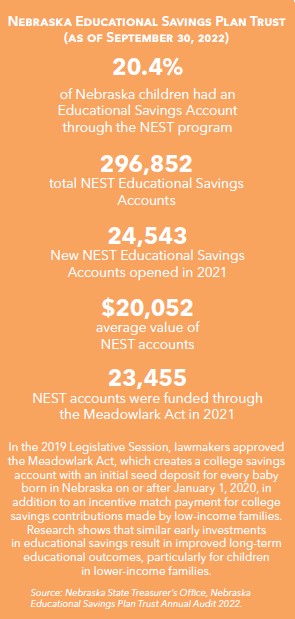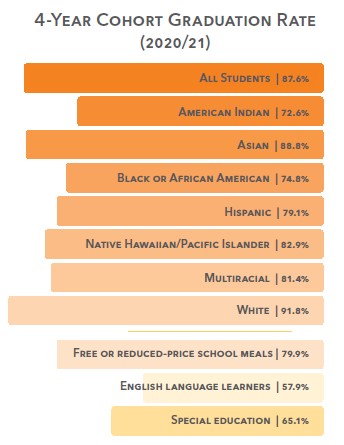Education is the surest way to build a pathway to lifelong success, and the early years of a child’s life are imperative to laying a solid foundation for success. Establishing the conditions that promote educational achievement for children is critical. With a strong and healthy early beginning, children can more easily stay on track to remain in school, graduate on time, pursue postsecondary education and training and enjoy a successful transition into adulthood. Closing gaps in educational access and quality is key to ensuring the future workforce can compete and build or continue the cycle of success and independence.
Child care
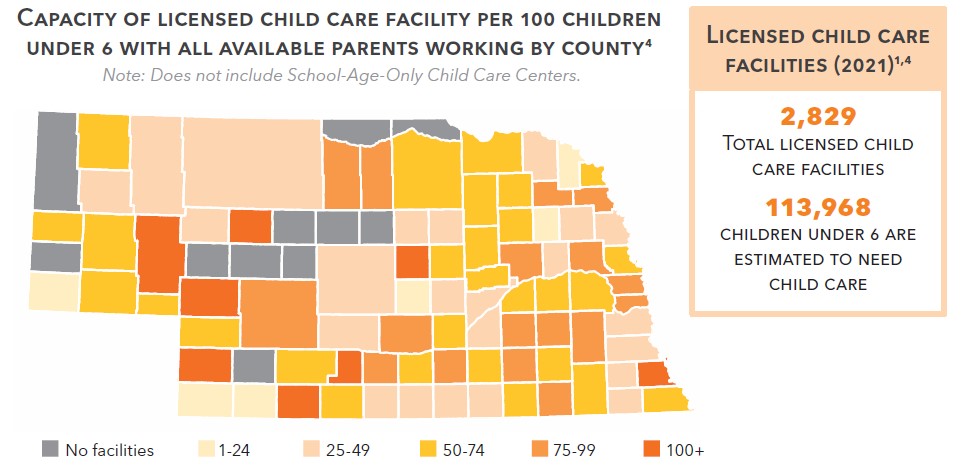
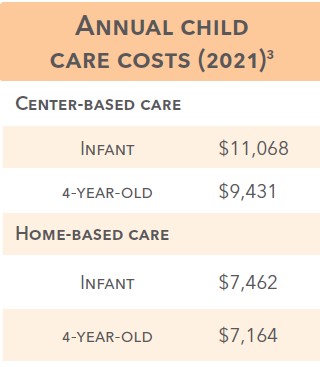
Child Care and Barriers to Work
6.0% (9,102) of Nebraska parents of children 0-5 quit, did not take, or greatly
changed their job because of child care problems in 2020-21.2
Child care subsidies (SFY 2021)4
- There were 20,742 children in Nebraska who received child care subsidies in SFY 2021. 1,178 children were in the care of a license-exempt providers.
- An average of 13,537 children received a subsidy each month for an average of 8 months. 8,781 were below school age, and 4,756 were school age.
- 10,841 children receiving a subsidy were from a family living below 100% FPL, 6,387 were from families between 100%-130% FPL and 1,601 were from families between 130%-185% FPL.
- $51,920,057 in state and $44,102,998 in federal funds were spent on the child care subsidy program.
3. Buffett Early Childhood Institute analysis of Nebraska Child Care market Rate Survey Report 2021.
Step Up to Quality

Nebraska Step Up to Quality is an Early Childhood Quality Rating and Improvement System (QRIS), passed by the Nebraska Legislature in 2013. The primary goal of Nebraska Step Up to Quality is to improve early care and education quality and increase positive outcomes for young children. This is done through informing parents about quality early care and education programs in understandable and measurable ways. In addition, it improves teacher and director effectiveness through training and professional development, formal education, and coaching. It also emphasizes strengthening the understanding and use of standards, assessment processes, and using data to improve quality.
As of 2021 Nebraska had
703 Step Up to Quality programs
286 Providers – Step 1: The program has completed the application to participate in Step Up to Quality, staff members have submitted a professional record, and the program’s director has completed orientation.
256 Providers – Step 2: The program director completed several trainings related to safety, child health, early learning, and management, as well as several self assessments related to child development knowledge.
161 Providers – Steps 3-5: Once programs achieve Step 2 they are eligible for coaching services. Early childhood coaches help guide programs as they set goals to make program improvements. During the rating process, programs earn points in the following standard areas, curriculum, learning environments & interactions, child outcomes, professional development and training, family engagement & partnerships, and program administration. Step 3-5 ratings are determined by the number of points achieved.
School-based preschool (2020/21)¹
17,553
children were enrolled in public
school-based preschool.
Public school preschool enrollment (2000/01 - 2020/21)¹
Early Development Network (2020/21)
The Early Development Network (EDN) serves families with children born with disabilities.
2,137
infants and toddlers had an Individualized Family Service Plan through EDN.
- 1,850 with a developmental delay
- 88 with a speech language impairment
- 53 with a hearing impairment
- 31 with autism
- 115 with some other disability
Source: Early Development Network, Annual Performance Report, FFY 2020-21.
Sixpence (2020/21)³
Sixpence serves children birth to age three who are at risk of failure in school and is funded through public and private dollars. There were 31 Sixpence programs in the state of Nebraska in the 2020/21 program year serving:
- 864 families
- 75 pregnant moms
- 1,016 children
5,484
children were served in 20 Early Head Start and 19 Head Start Programs in the 2020/21 program year.²
133
pregnant women were served in Early Head Start in the 2020/21 program year.²
7.6%
of the children served by Early Head Start/Head Start in 2020/21 were unhoused and 3.9% were in foster care.²
1. Nebraska Department of Education.
2. Office of Head Start, Program Information Report.
3. Sixpence Early Learning Fund 2020-21 Evaluation Report, UNMC.
K-12 Student Characteristics
324,176 children were enrolled in public school in 2020/21.¹
School membership by grade (2020/21)
4.0%
of Nebraska school students were highly mobile, meaning they enrolled in two or more public schools during the 2020/21 school year. Higher school mobility is correlated with lower achievement.
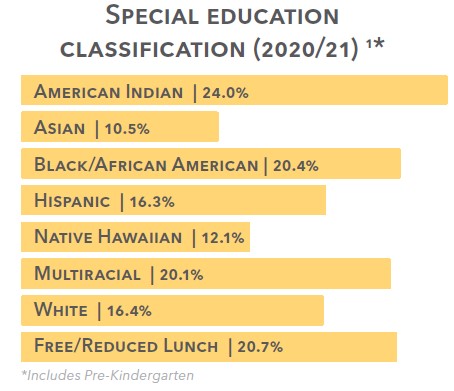

Rate of home schooled students per 1,000 students (2010/11 - 2020/2021)
Source: Nebraska Department of Education.
Percent of students who were English language learners (2010/11 - 2020/21)
Free/reduced cost school meals
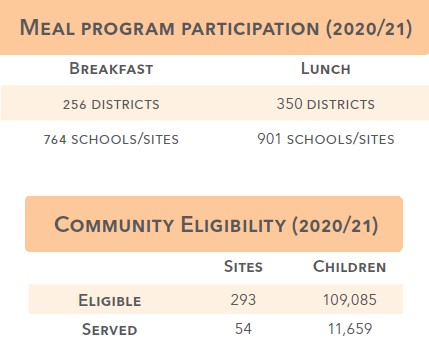
Percent students eligible for free or reduced price school meals (2010/11 - 2020/21))
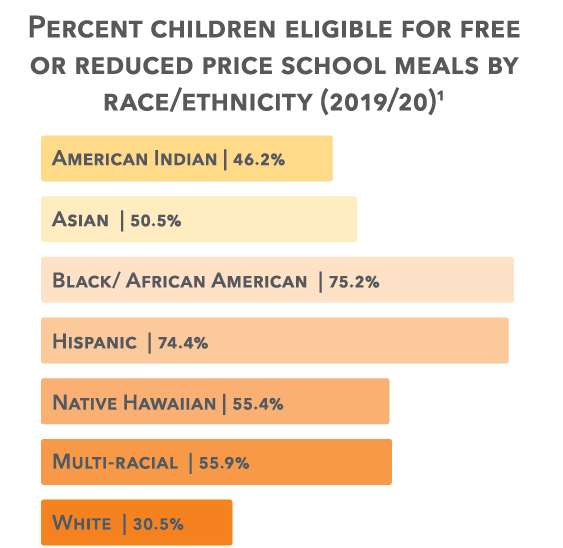
There were 130 Summer Food Participation sites in 2021, serving a combined average of 33,985 meals daily.
Source: Nebraska Department of Education.
English Language Arts Proficiency
Reading is a fundamental skill that affects learning experiences and school performance of children and teens. The ability to read proficiently translates to a greater likelihood of performing well in other subjects. Children with lower reading achievement are less likely to be engaged in the classroom, graduate high school, and attend college.
Source: Child Trends, Reading Proficiency.
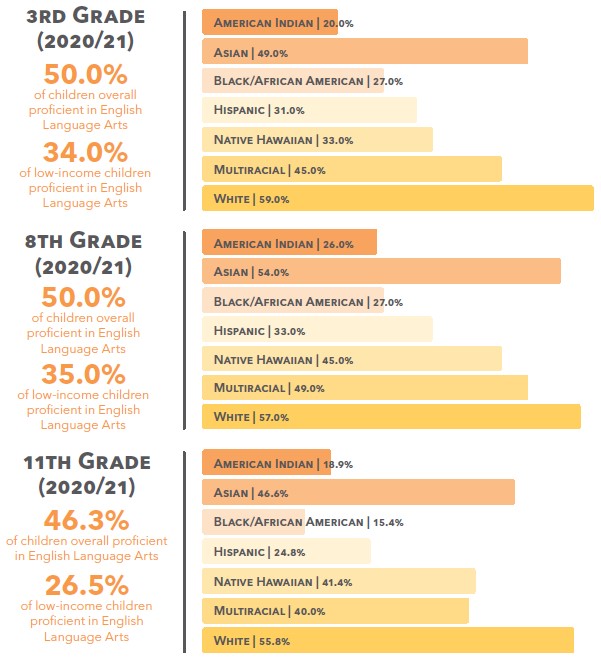
Sources: Nebraska Department of Education.
Math Proficiency
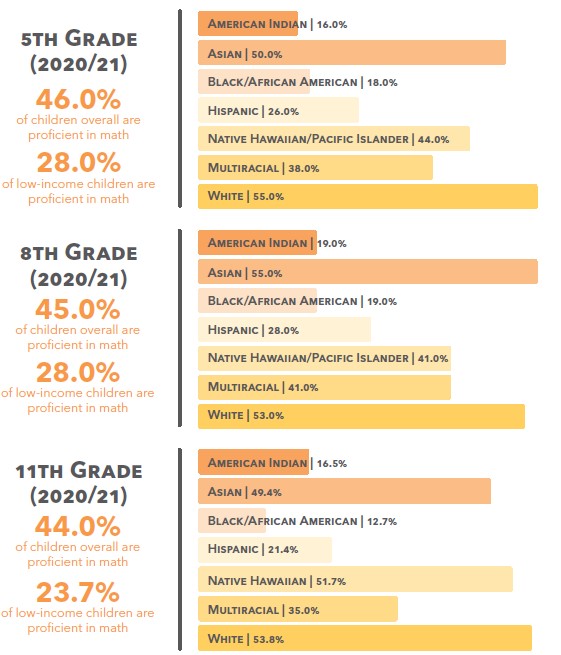
Sources: Nebraska Department of Education.
Science Proficiency
Source: Child Trends, Science Proficiency.
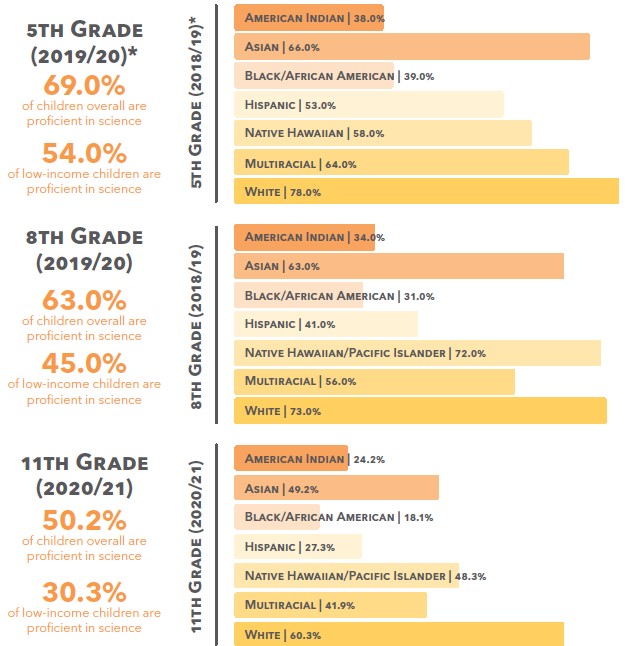
Sources: Nebraska Department of Education.
*Due to Covid-19 and the rollout of a new science field test in 2021, these are the most recent years of
reportable data available.
Absences & career readiness
222 (<1%)
students in public and nonpublic
schools were expelled during the
2020/21 school year.
13,239 (4.1%)
students in public and nonpublic
schools were suspended during
the 2020/21 school year.
1,901 students in public and nonpublic
schools dropped out in 2020/21.
Source: Nebraska Department of Education.
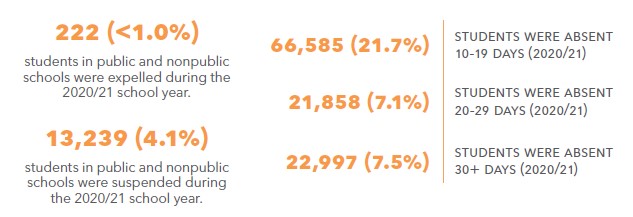
96,000 (51.0%)
young people age 18- 24 were enrolled in or completed college.3
66.6%
of Nebraska’s 2019/20 public high school graduates had enrolled in college by April 2021.1
43.9%
of students who enrolled in a 2-year public college in fall 2015 completed within six years.1
21,966 students
of the 2021 graduation cohort took the ACT with average composite score of 18.8.2
16,000 (8.0%)
young people age 18-24 were not attending school, not working, and had no degree beyond high school.3
69.6%
of students who enrolled in a 4-year public college in fall 2015 completed within six years.1
2,714 students
were enrolled in a career academy in 2020/21.2
18,981 students
were enrolled in dual credit courses in 2020/21.2
4,000 (4.0%)
teens 16-19 were not in school and not working.3
1. National Student Clearinghouse Research Center.
2. Nebraska Department of Education.
4. The Annie E Casey Foundation Kids Count Data Center.
Graduation & educational savings
20,914 students
completed high school in four years in 2020/21.
